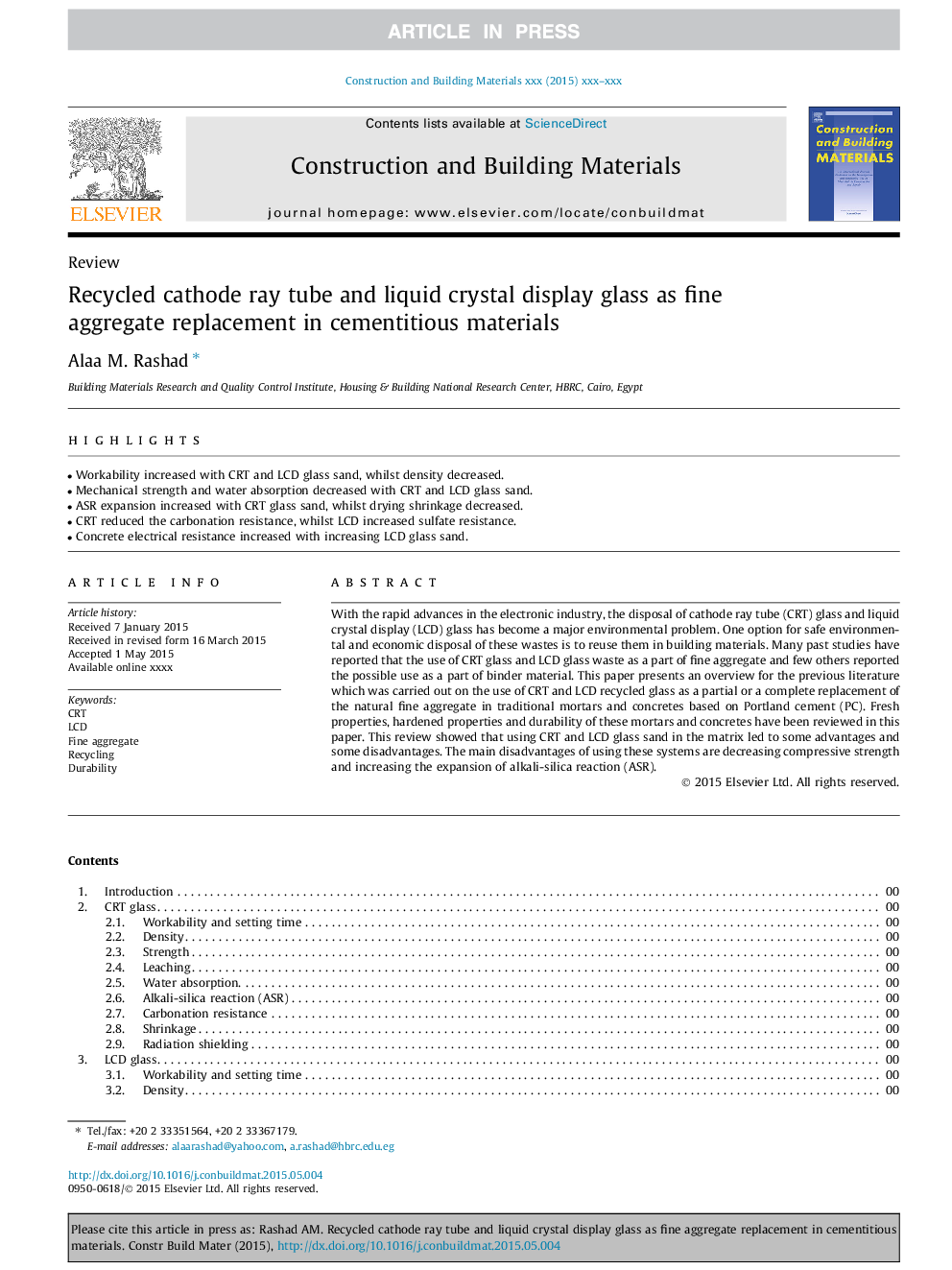| Article ID | Journal | Published Year | Pages | File Type |
|---|---|---|---|---|
| 6719971 | Construction and Building Materials | 2015 | 13 Pages |
Abstract
With the rapid advances in the electronic industry, the disposal of cathode ray tube (CRT) glass and liquid crystal display (LCD) glass has become a major environmental problem. One option for safe environmental and economic disposal of these wastes is to reuse them in building materials. Many past studies have reported that the use of CRT glass and LCD glass waste as a part of fine aggregate and few others reported the possible use as a part of binder material. This paper presents an overview for the previous literature which was carried out on the use of CRT and LCD recycled glass as a partial or a complete replacement of the natural fine aggregate in traditional mortars and concretes based on Portland cement (PC). Fresh properties, hardened properties and durability of these mortars and concretes have been reviewed in this paper. This review showed that using CRT and LCD glass sand in the matrix led to some advantages and some disadvantages. The main disadvantages of using these systems are decreasing compressive strength and increasing the expansion of alkali-silica reaction (ASR).
Related Topics
Physical Sciences and Engineering
Engineering
Civil and Structural Engineering
Authors
Alaa M. Rashad,
